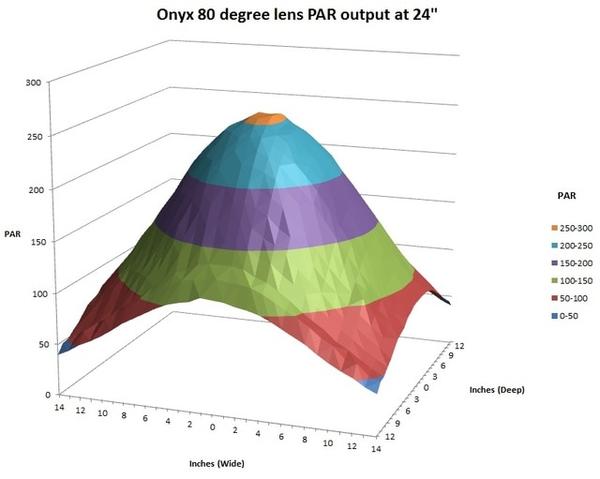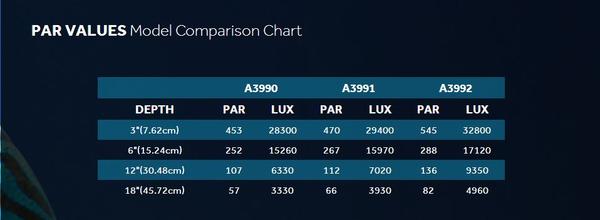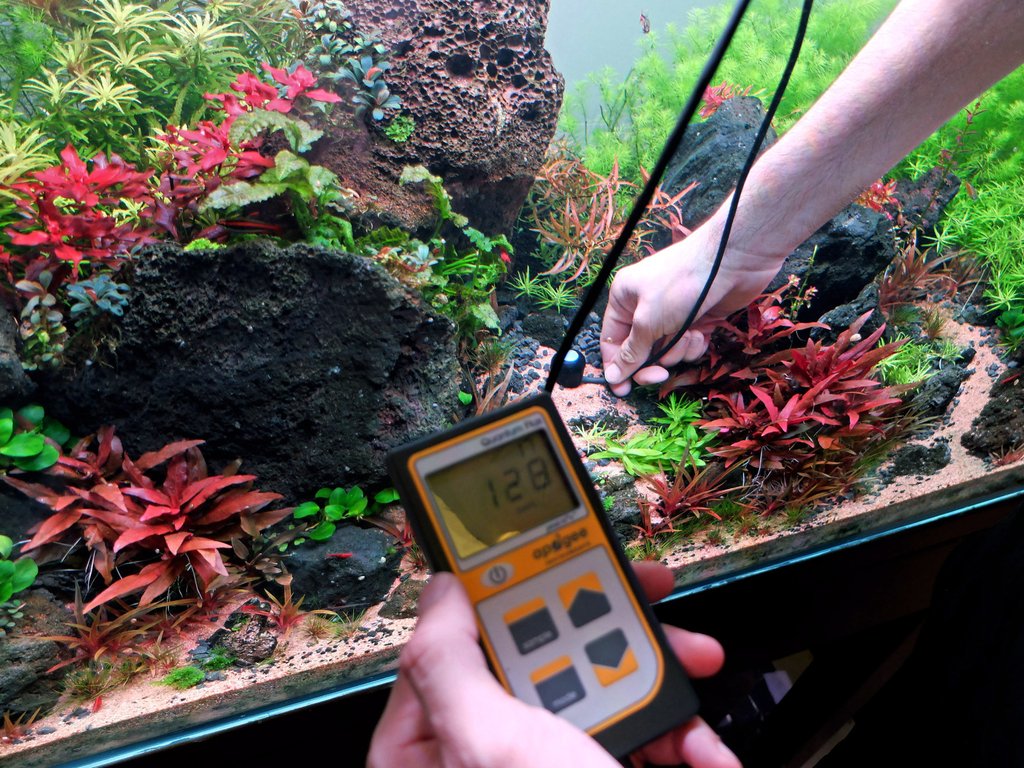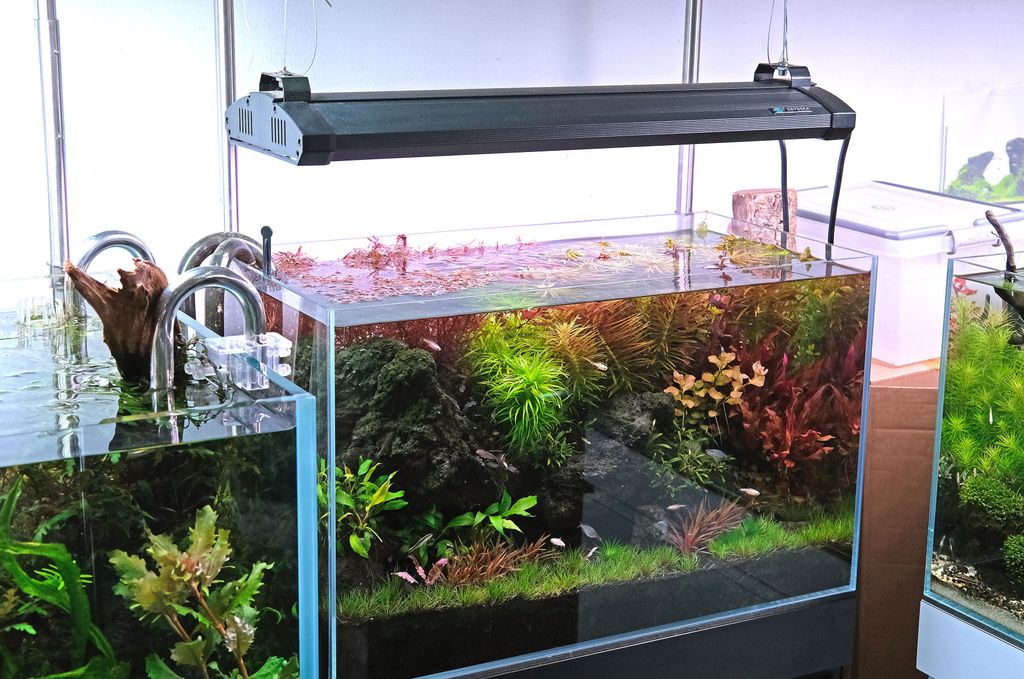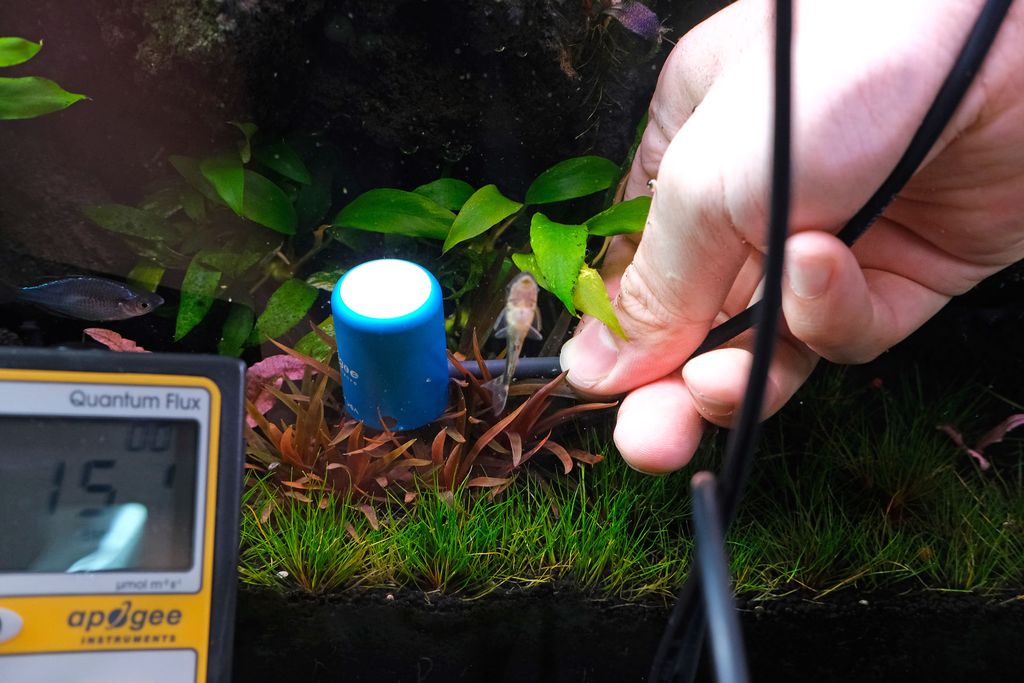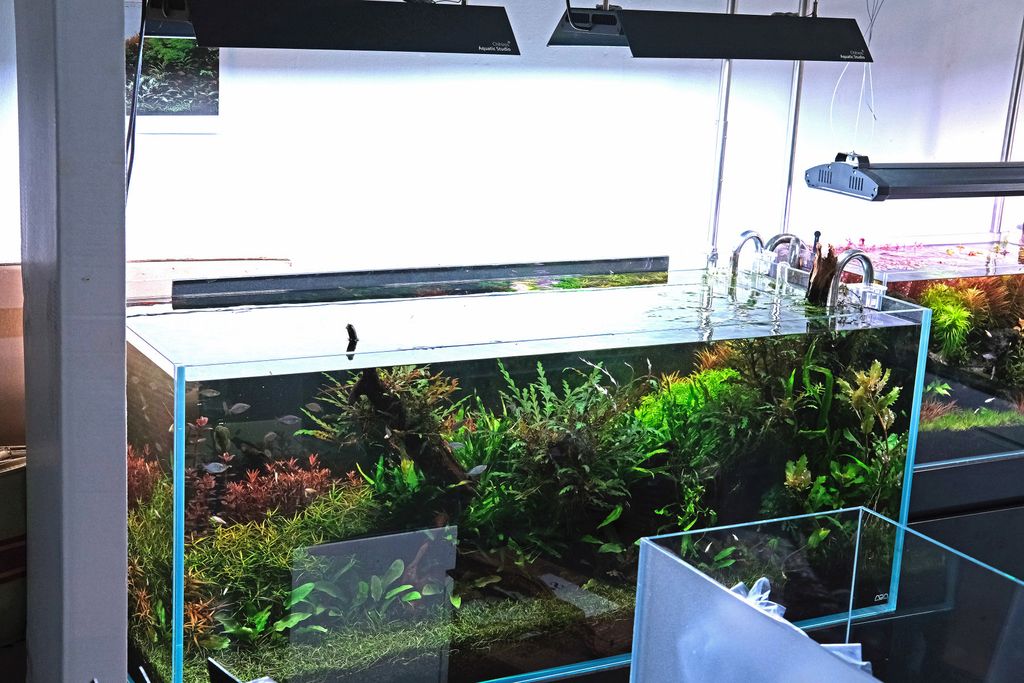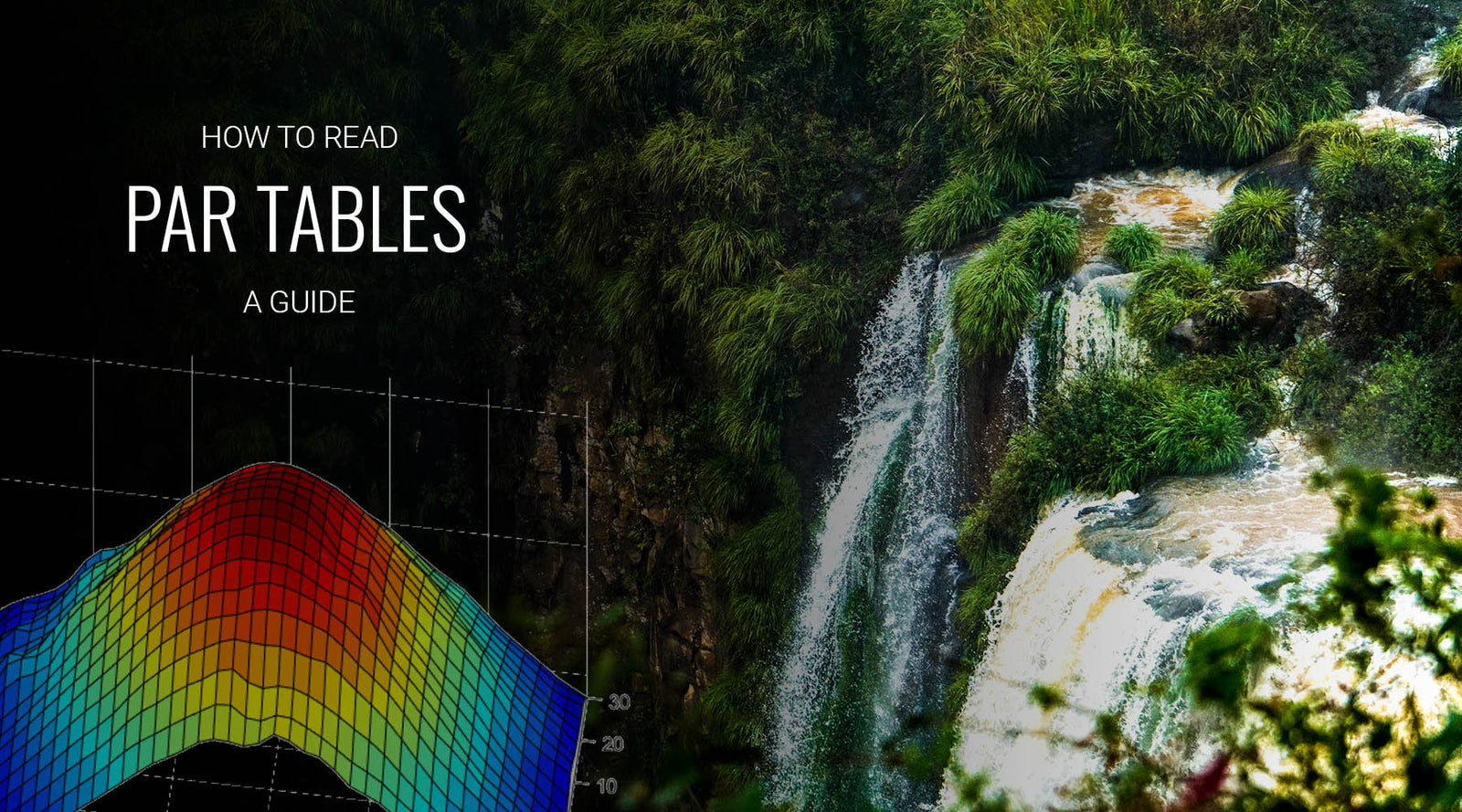
The PAR Measure (Photosynthetically Active Radiation) is the most useful gauge of a light’s relevant ‘strength’ for plant growth as it directly measures the amount of light available for plant photosynthesis.
Plants use visible light for photosynthesis, which ranges from low blue to far-red light and is described as the wavelength between 380 nm and 750 nm. The region between 400 nm and 700 nm is what plants primarily use to drive photosynthesis and is typically referred to as Photosynthetically Active Radiation (PAR).Plant biologists quantify PAR using the number of photons in the 400-700 nm range received by a surface for a specified amount of time, or the Photosynthetic Photon Flux Density (PPFD) in the units μmol/s. This value does not discriminate between photons of different wavelengths.
How to read PAR tables
COMMON PAR CHART EXAMPLE
The PAR table above(From a Finnex LED unit) shows the amount of light reaching different tank depths for the particular light unit in question. The left axis shows PAR values for areas directly beneath the light. At six inches depth the value is 186, dropping to 73 at 18 inches of depth.
Lighting is strongest right below the centerline of the fixture, dropping as distance from the center line increases. How much it drops depends on the depth of the tank and fixture’s reflectors/lens. Tank manufacturers would usually give readings taken from a filled tank.
Doubling the number of fixtures doubles the PAR value if the fixture’s light overlap entirely. PAR values are additive in that sense.
3D PAR GRAPH
Above is an example of a 3D PAR chart from Onyx by RapidLED, a marine light. This chart only shows PAR at a fixed depth (24 inches).
In this case, the left axis shows the PAR value at 24inches of depth. It shows how fast PAR drops off from the centerpoint for this particular spotlight. 3 inches radius from center of the spotlight will give upwards of 200 Umols of light at 24 inch depth. This falls off to 100ish at 6 inches from the centerpoint.
SIMPLIFIED PAR TABLE
This is a simplified PAR table for the Fluval Fresh & Planted 2.0. LED just gives the PAR value for directly under the lamp. So the A3990 model will have 57 umols of light directly under the light bar at 18 inches of tank depth. The weakness of this type of PAR table is that one does not know exactly how much PAR values fall off from the centerline of the fixture. It takes a bit of guesswork.
Notice that as fixture length increases (the A3992 is twice the length of the A3990) PAR increases – this is common in many lights as longer fixtures have greater internal reflection.
What if there is no PAR data?
Some manufacturers don’t publish PAR tables. By googling and searching through planted forums, one can frequently find hobbyist measurements. Another way to gauge the efficacy of a light is to find examples of tanks that are using the said light. Given the large variety of lights available on the market, there is really little reason to buy totally foreign & untested products.
General PAR guidelines for tank
The light should produce sufficient PAR at the substrate depth of your tank. The broad guidelines as commonly used by the aquatic plant community is as follows :
| PAR Values | Suitable for |
| 20 to 30 umols | Low lighting – suitable for shade aquarium plants such as Anubias, Java fern, Cryptocoryne and mosses. If you are growing these, using low lighting just makes life easier – less algae issues to deal with. Less light means slower growth rates and less maintenance overall. |
| ~50 umols | Medium Lighting. With good CO2, you can grow any commercially available plant, but may not get the most intense coloration in colored plants. Good for carpets. Most carpets grow denser with at least medium levels of lighting. |
| 90+ umols | High lighting – Good for red/colored aquarium plants. Higher lighting will bring out coloration more strongly. Allows for greater density and self-shading effects. However, this level of lighting requires good control of tank cleanliness and plant health to avoid algae issues. |
Using a single Maxlite life aqua LED fixture over a 90x45x45cm tank. Substrate level PAR measures at 128umols.
A 4 tube T5 fixture over a 2 feet tank produces a lot of light for low cost.
d2 X Chihiros vivids hung high over a 120x50x50cm tank produces very high PAR values (around 145 umols of PAR, after conversion factor of 1.32 for Apogee 502 PAR meter above).

